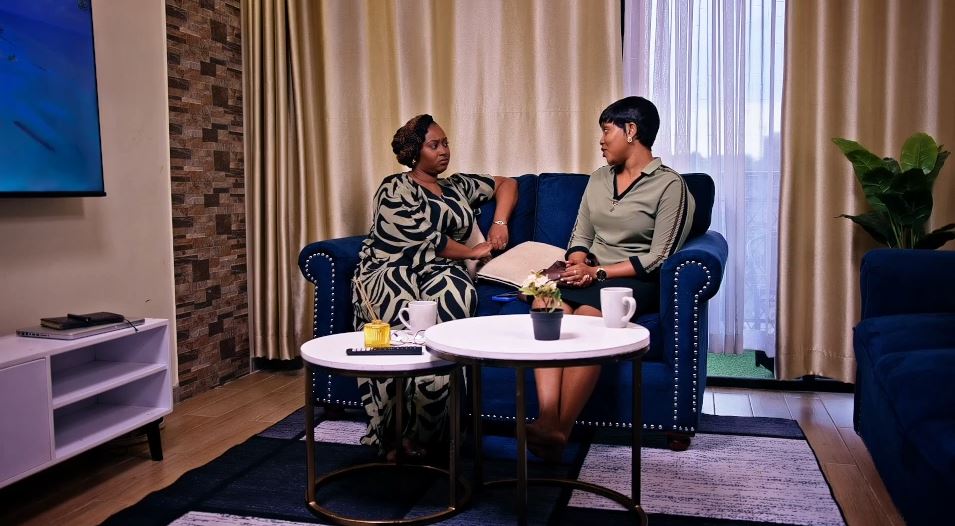Why the Nikon Z30 is a Great Choice for Vloggers and Content Creators
The Nikon Z30 is a compact, APS-C mirrorless camera designed specifically for vloggers and content creators, offering a blend of portability, video-focused features, and affordability. Launched in July 2022, it’s Nikon’s most vlogger-centric camera to date, tailored for those transitioning from smartphone filming to a dedicated camera system. With its competitive pricing in Kenya, the Z30 delivers professional-grade video quality and user-friendly features, making it an excellent choice for creators on a budget. This article explores the Nikon Z30’s key selling points, competitors, ideal users, drawbacks, and pricing in Kenyan Shillings, drawing on insights from various reviews.
Selling Points of the Nikon Z30 for Vloggers and Content Creators
- Uncropped 4K Video at 30fps
The Nikon Z30 records 4K UHD video at up to 30fps using the full width of its 20.9MP APS-C CMOS sensor, ensuring wide-angle shots without a crop factor, which is critical for vloggers capturing themselves and their surroundings. It also supports Full HD 1080p at up to 120fps for smooth slow-motion footage, adding creative versatility for dynamic content like travel vlogs or action sequences. The “Flat” color profile simplifies post-production color grading, making it beginner-friendly compared to complex Log profiles. - Fully Articulating Touchscreen
The 3-inch, 1.04-million-dot vari-angle touchscreen LCD is a standout feature for vloggers. It flips out to the side and rotates 180 degrees, allowing solo creators to frame themselves easily during selfie-style recording. Unlike the Nikon Z50’s bottom-hinged screen, the Z30’s side-hinged design remains accessible even when mounted on a tripod, enhancing usability for vlogging setups. - Advanced Autofocus with Eye Detection
The Z30’s 209-point hybrid autofocus system includes reliable Eye and Animal Detection AF for both video and stills, ensuring sharp focus on faces or pets, even in dynamic scenes. Reviews note its fast and accurate performance, locking onto subjects effectively in bright and low-light conditions, making it ideal for vloggers filming on the move. - Compact and Lightweight Design
Weighing 405g (with battery and card) and featuring a deep ergonomic grip, the Z30 is easy to hold for extended handheld vlogging sessions. Its compact size makes it highly portable, fitting into small bags for travel vloggers or creators shooting on location. The robust build, while not weather-sealed, feels solid for beginner-level gear. - Long Recording Times with USB-C Power
The Z30 supports up to 125 minutes of continuous Full HD recording and approximately 35 minutes in 4K, significantly longer than the 30-minute limit of the Nikon Z50 or Z fc. USB-C power delivery allows constant power during livestreaming or extended shoots, and the camera can charge while recording, ensuring uninterrupted workflows. - Vlogger-Centric Features
A prominent red record button, tally lamp on the front, and self-portrait mode (which clears the screen for an unobstructed view when flipped forward) make the Z30 intuitive for solo vloggers. The built-in stereo microphone with vocal and wide-range settings delivers decent audio, while a 3.5mm mic input supports external microphones like the Rode VideoMicro for professional sound quality. - Connectivity and Streaming
Built-in Wi-Fi and Bluetooth, paired with Nikon’s SnapBridge app, enable seamless file transfers and remote control via smartphones, streamlining social media workflows. The Z30 also supports plug-and-play webcam functionality for Full HD 60p streaming via USB-C or 4K 30p over HDMI, making it a solid choice for live streamers. - Nikon Z-Mount Lens Compatibility
The Z30 uses Nikon’s Z-mount, compatible with both DX (APS-C) and FX (full-frame) lenses, with a 1.5x crop factor for the latter. The 16-50mm f/3.5-6.3 VR kit lens offers a versatile 24-75mm equivalent focal length with vibration reduction (VR) for stable handheld footage. The optional FTZ II adapter allows use of Nikon’s F-mount DSLR lenses, expanding options for creators with existing gear.
Pricing in Kenyan Shillings
As of August 2025, the Nikon Z30’s price in Kenya varies based on configuration and retailer. Prices are estimated using a conversion rate of 129 KSh/USD from USD pricing cited in reviews:
- Body Only: Approximately KSh 91,260 (approx. $707.95)
- With 16-50mm f/3.5-6.3 VR Lens: Approximately KSh 109,260 (approx. $849.95)
- Creator’s Accessory Kit (16-50mm lens, Rode VideoMicro, SmallRig tripod, Bluetooth remote): Approximately KSh 128,430 (approx. $995)
- Two-Lens Kit (16-50mm and 50-250mm f/4.5-6.3 VR): Approximately KSh 154,800 (approx. $1,199.95)
Prices may vary, so check with local retailers like Jiji.co.ke, Zuricart, or Price in Kenya for current deals.
Competitors
The Nikon Z30 competes with other vlogger-focused cameras in the budget and mid-range mirrorless segment. Here are its key rivals:
- Sony ZV-E10
- Price: ~KSh 90,300 (body only, $700); ~KSh 103,200 (with 16-50mm lens, $800)
- Pros: APS-C 24.2MP sensor, 4K 30p (1.2x crop at 30fps, full-width at 24fps), headphone jack, Log profiles for advanced grading, lighter (343g).
- Cons: No in-body stabilization (lens-based only), smaller 920k-dot LCD, less ergonomic grip.
- Why Choose Over Z30?: Offers a headphone jack and Log profiles for serious videographers, but the Z30’s uncropped 4K and longer recording times are better for wide-angle vlogging.
- Panasonic Lumix G100D
- Price: ~KSh 77,400 (with lens, $600)
- Pros: Micro Four Thirds 20.3MP sensor, 5-axis hybrid stabilization, OZO audio, lighter (345g), affordable.
- Cons: Smaller sensor, no 4K slow-motion, less reliable contrast-based autofocus.
- Why Choose Over Z30?: Superior stabilization and audio, but the Z30’s larger APS-C sensor and autofocus performance are better for quality-conscious vloggers.
- Canon EOS R10
- Price: ~KSh 120,000–140,000 (approx. $930–1,085)
- Pros: APS-C 24.2MP sensor, uncropped 4K 60p, 15fps burst, Dual Pixel autofocus, lighter (429g).
- Cons: More expensive, shorter battery life (~350 shots), fewer native APS-C lenses.
- Why Choose Over Z30?: Faster performance and better autofocus, but the Z30 is more affordable and vlogger-optimized.
- Sony ZV-1F
- Price: ~KSh 64,500–77,400 (approx. $500–600)
- Pros: 1-inch 20.1MP sensor, fixed 20mm f/2.0 lens, 4K 30p, Real-Time Eye AF, ultra-light (256g), budget-friendly.
- Cons: No interchangeable lenses, no RAW photos, no headphone jack, shorter battery life.
- Why Choose Over Z30?: More compact and cheaper, but the Z30’s interchangeable lenses and larger sensor offer greater versatility.
Who is the Nikon Z30 Best For?
The Nikon Z30 is ideal for:
- Beginner Vloggers and Content Creators: Its user-friendly interface, vari-angle screen, and vlogger-specific features like the tally lamp and large record button make it perfect for those new to dedicated cameras.
- Smartphone Upgraders: The larger APS-C sensor provides superior image quality, low-light performance, and depth of field control compared to smartphones, appealing to creators seeking a professional look.
- Travel Vloggers: Its compact size and lightweight build are great for creators filming on the go, such as during travel or events.
- Budget-Conscious Creators: Priced lower than the Z50 or Z fc, the Z30 offers excellent value for those prioritizing video over stills photography.
Drawbacks of the Nikon Z30
While the Z30 is a strong contender, it has some limitations:
- No In-Body Image Stabilization (IBIS): The Z30 relies on lens-based vibration reduction (VR) or electronic VR, which introduces a 1.23x crop in video, tightening the 16-50mm lens’s 24mm equivalent to ~30mm. This can be limiting for wide-angle vlogging without a gimbal.
- No Headphone Jack: Unlike the Sony ZV-E10, the Z30 lacks a headphone port for audio monitoring, forcing reliance on on-screen levels, which may not suffice for professional audio workflows.
- No Electronic Viewfinder (EVF): The absence of an EVF limits its appeal for hybrid shooters or photographers who prefer framing through a viewfinder, making it less versatile for stills-focused creators.
- Limited Native DX Lens Options: Nikon’s Z-mount DX lens lineup is sparse, with only four APS-C lenses (e.g., 16-50mm, 12-28mm). While FX lenses or F-mount lenses (via FTZ II adapter) are compatible, they increase cost and weight.
- Autofocus Issues in Video: Some users report inconsistent face and eye-tracking autofocus in video mode, particularly with moving subjects, requiring manual focus adjustments in dynamic scenarios.
Conclusion
The Nikon Z30 is a compelling choice for vloggers and content creators seeking an affordable, video-focused mirrorless camera. Its uncropped 4K video, fully articulating touchscreen, reliable autofocus, and compact design make it a standout for beginners and smartphone upgraders. Priced between KSh 91,260–154,800 in Kenya, it offers excellent value compared to rivals like the Sony ZV-E10, Panasonic Lumix G100D, or Canon EOS R10, especially with its Creator’s Accessory Kit. However, the lack of IBIS, headphone jack, EVF, and limited native lens options may push advanced creators toward alternatives like the Sony ZV-E10 for audio monitoring or the Canon EOS R10 for faster performance.
For beginner vloggers, travel creators, and those prioritizing portability and ease of use, the Nikon Z30 is an excellent investment in 2025, delivering professional-quality content without the complexity or cost of higher-end systems. Verify pricing with local retailers like Jiji.co.ke or Zuricart for the latest deals.
NEEMA CITIZEN TV 27TH AUGUST 2025 WEDNESDAY PART 1 AND PART 2 FULL EPISODE COMBINED










You must be logged in to post a comment.